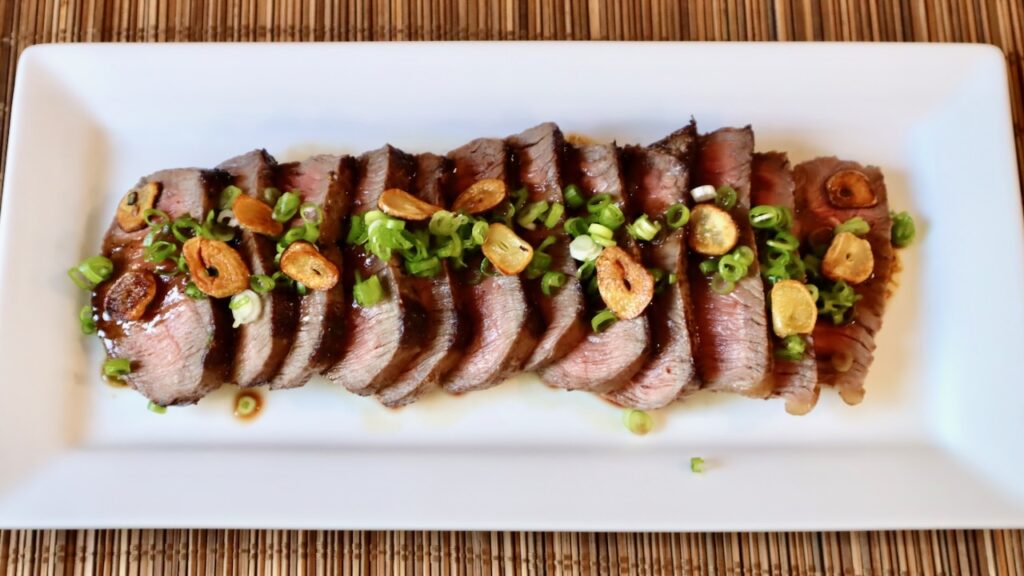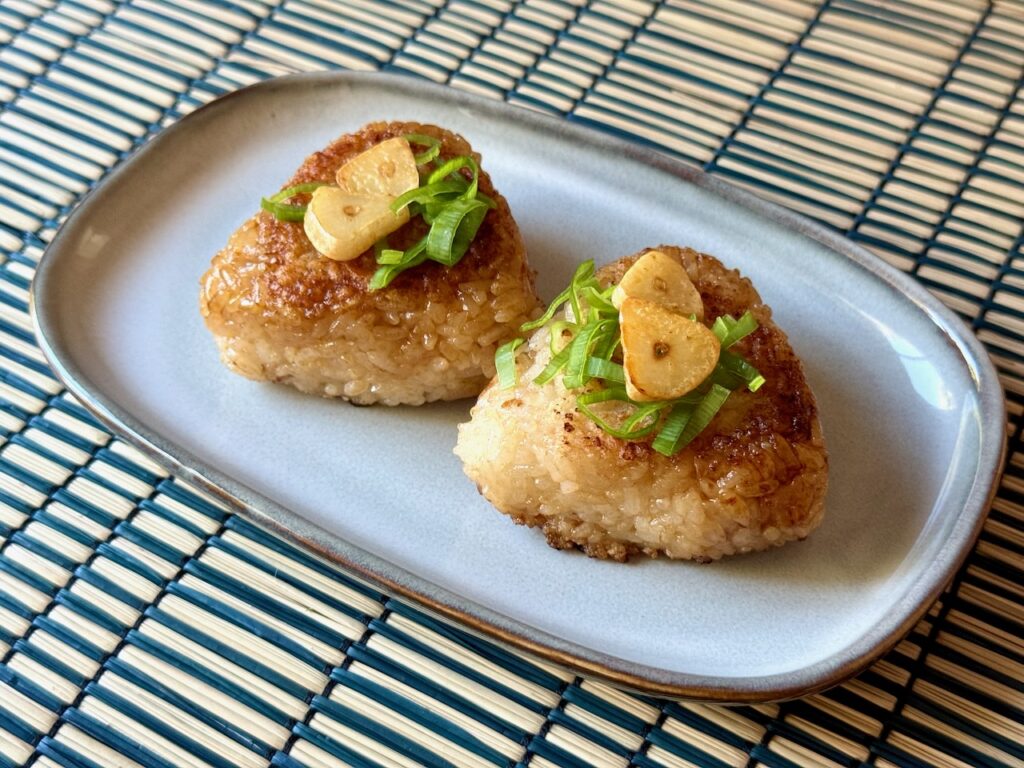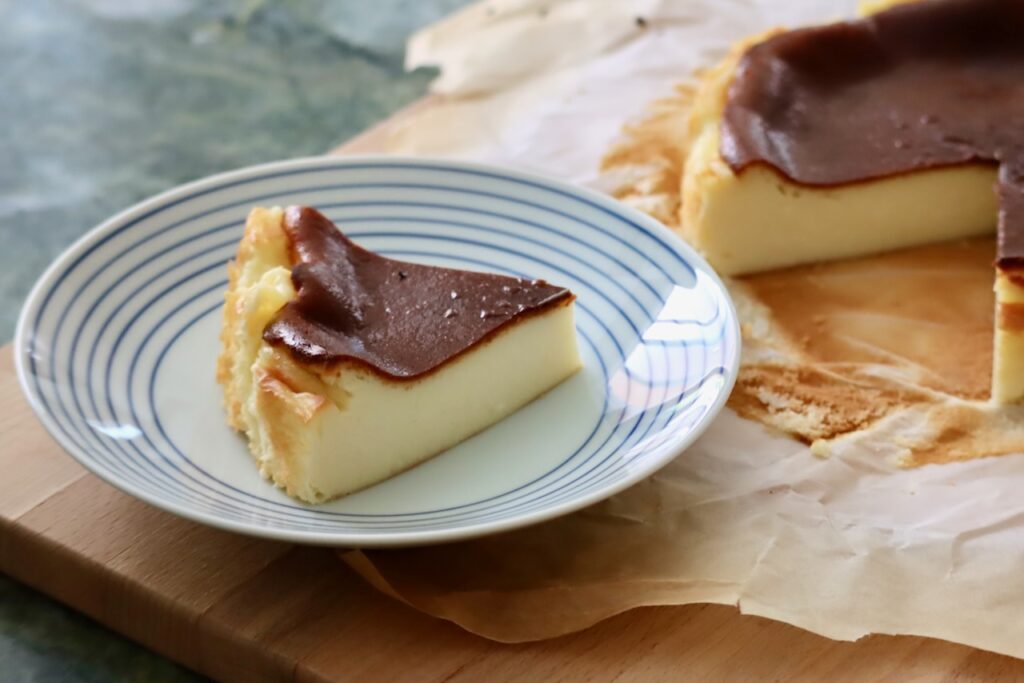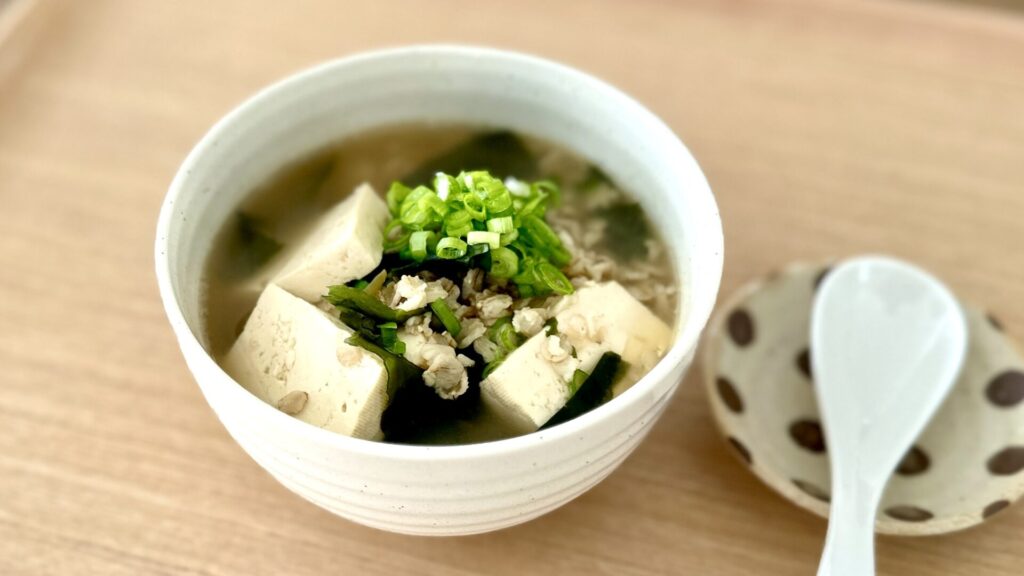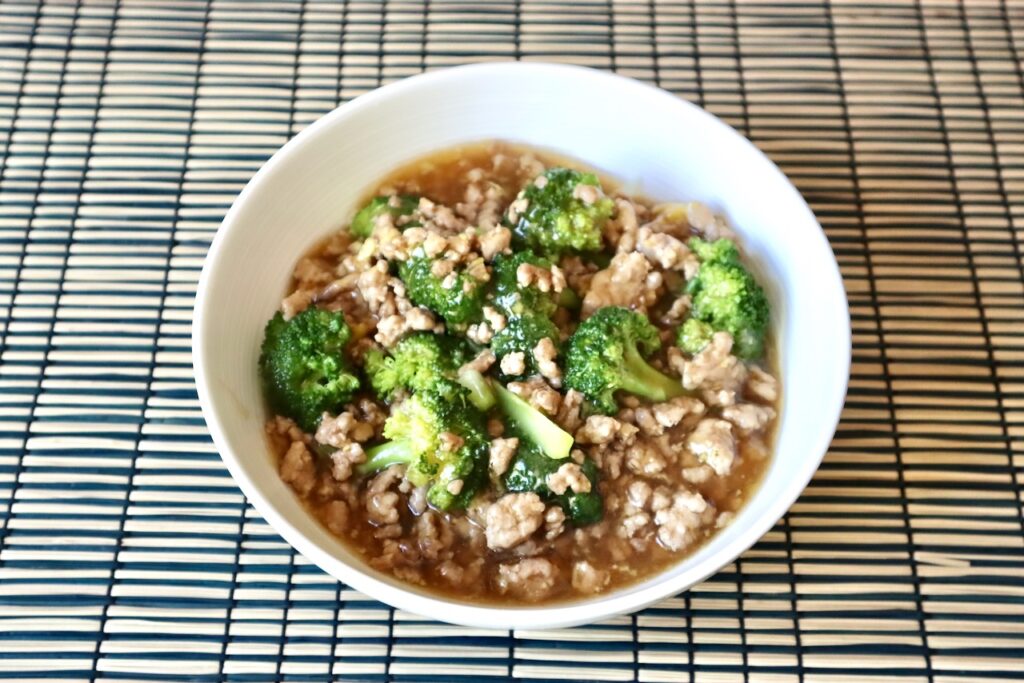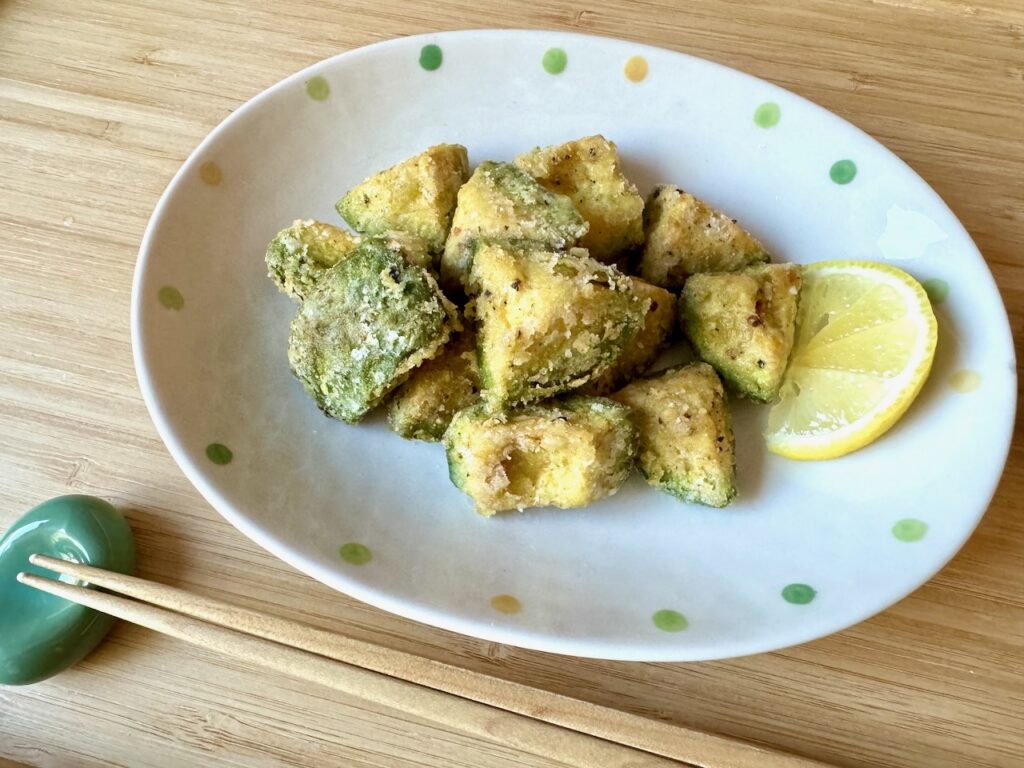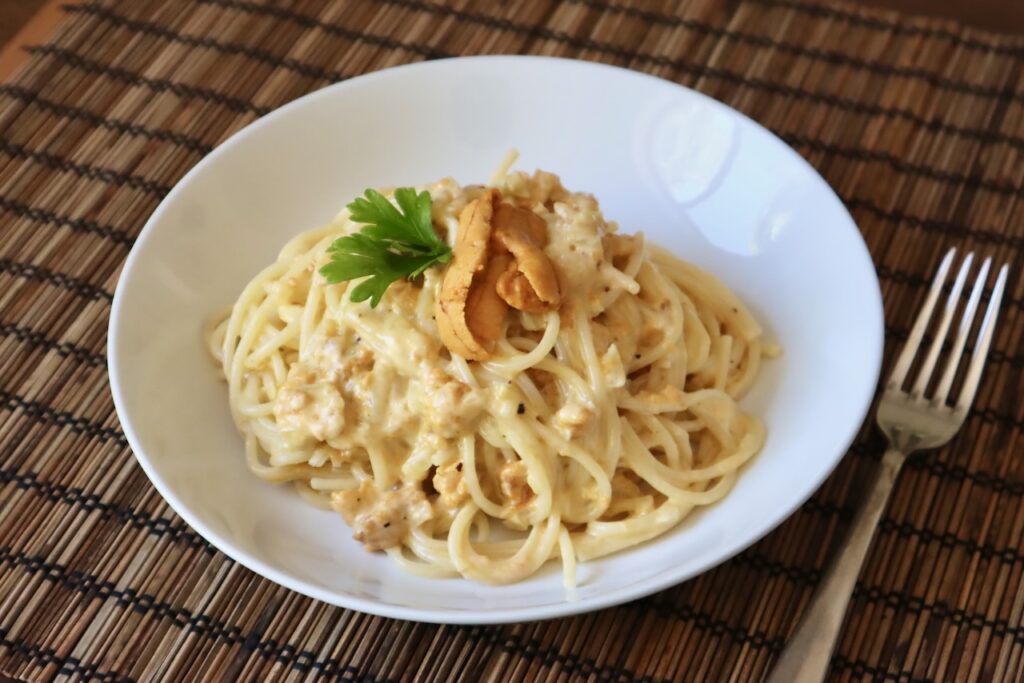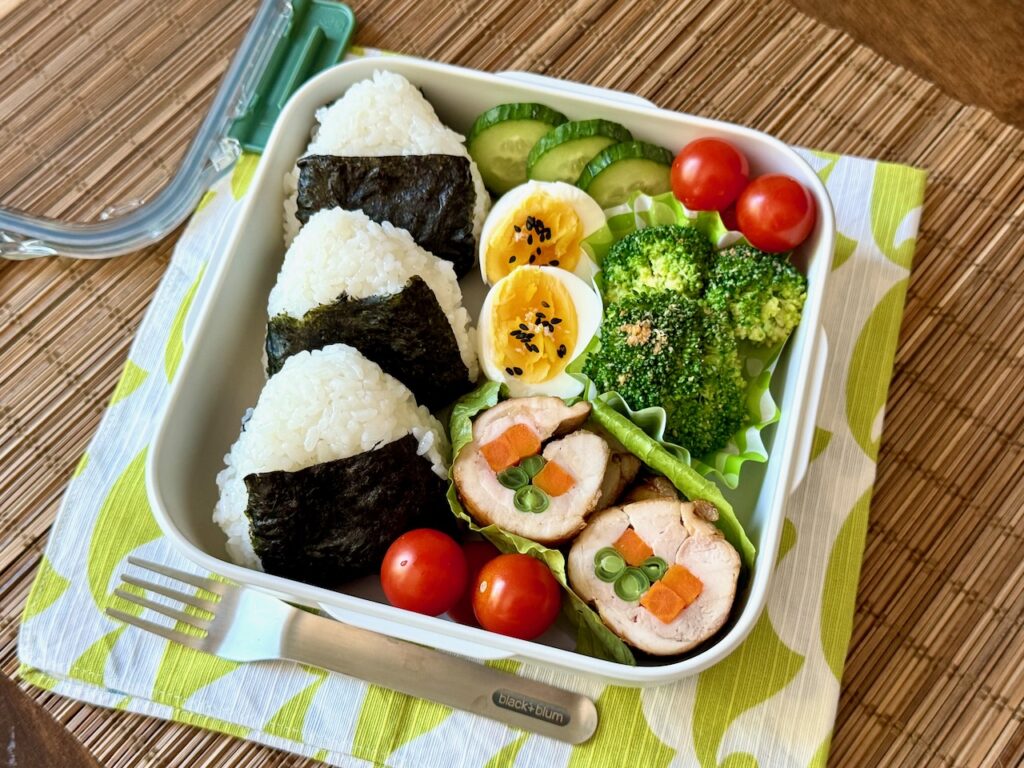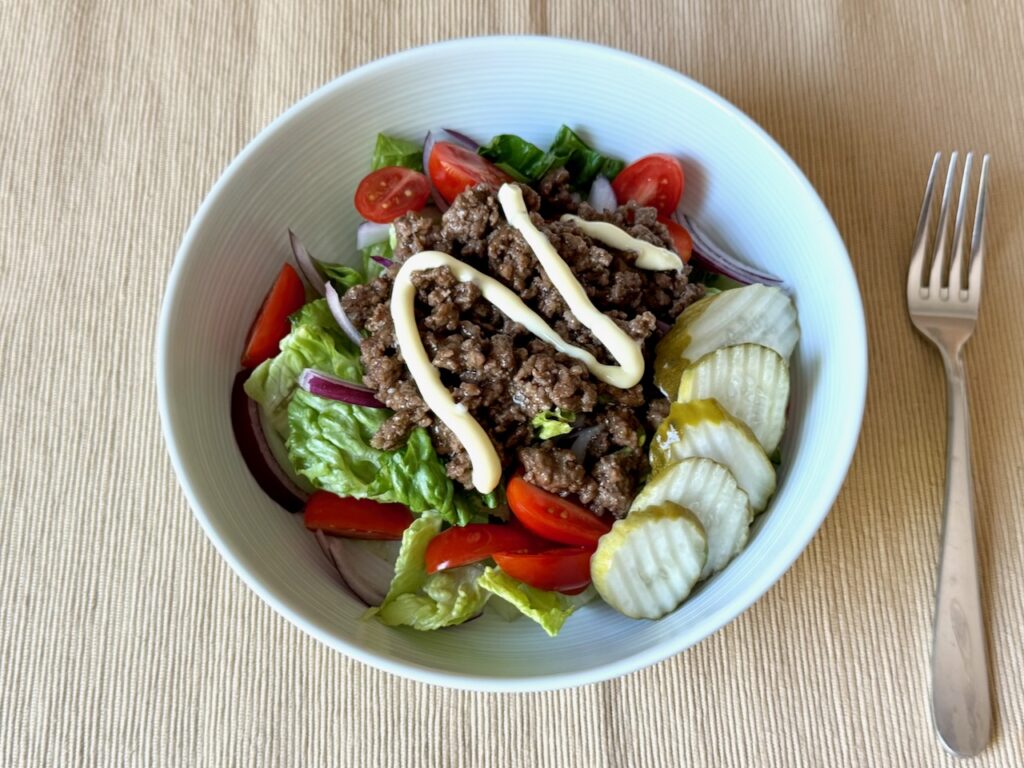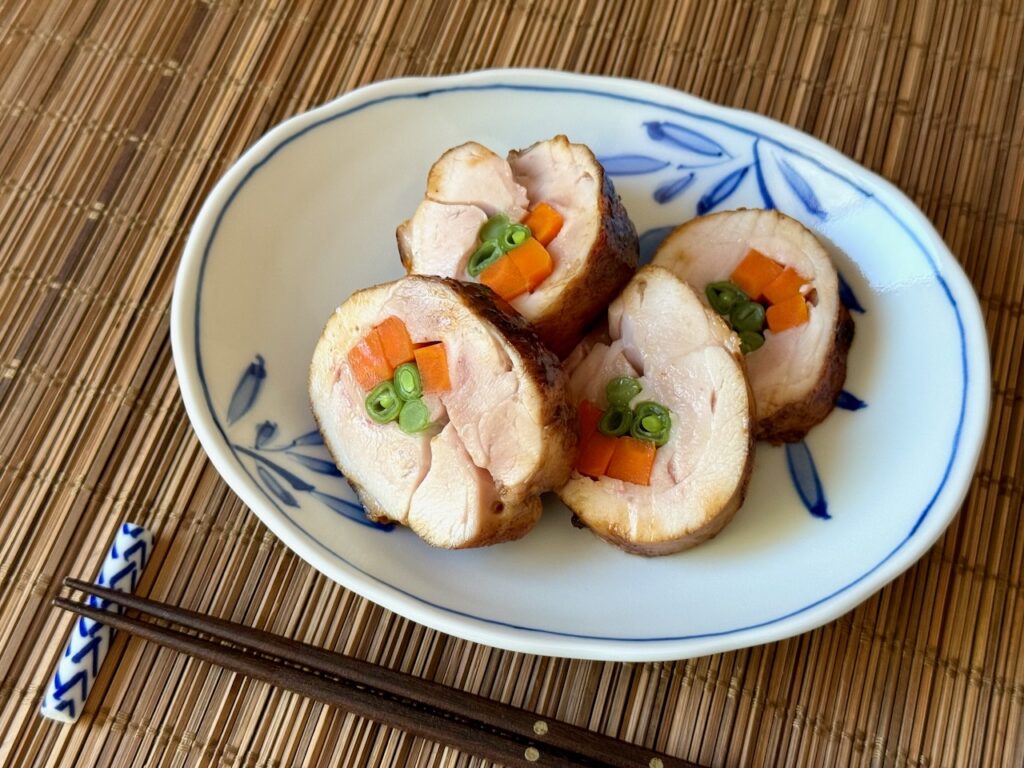Beef Steak with Garlic Soy-Butter Sauce features a thick cut of sirloin steak with a Japanese-flavored garlic soy butter sauce. This hearty red meat may not be an everyday dish for many, but it’s the perfect choice when craving substantial, meaty food. Our sauce is bold and strong, eliminating the need for any bottled steak sauce.
Garlic Yaki Onigiri is a variation of Yaki Onigiri, Japanese rice balls that are grilled to crisp on the outside. In this recipe, we simply pan-fried the rice balls with oil infused with garlic. Seasoning is quite simple, only with soy sauce, but Katsuobushi bonito flakes mixed in the rice adds so much umami to this simple dish. The flavor combination of fried garlic and rice can’t go wrong, and it’s simply irresistible. You might want to double or triple the recipe as you may need more than a couple once you start eating these rice balls!
Basque Cheesecake is a Spanish cheesecake with a distinctive burnt and caramelized top. Its creamy, almost custard-like interior without a crust became a culinary sensation around the world. Japan is no exception, and Basque Cheesecake was THE dessert in the late 2010s that everybody was talking about. It is still going strong in Japan, and not only restaurants and bakeries but also many convenience stores have started making packaged Basque Cheesecakes, making it super popular among the ordinary public, not just foodies.
Oatmeal with Tofu is a healthy breakfast alternative to more traditional oatmeal with cream and sugar. This savory version has plenty of delicious Japanese flavors such as Dashi and tofu, and it’s still very quick and easy to make. It’s almost like soup because that’s how I like it, but if you prefer it thicker, reduce the amount of water (you may want to reduce some of the seasonings too). Oatmeal has many health benefits such as lowering cholesterol and controlling blood sugar. It also contains a lot of fiber and keeps you feeling full until the next meal. Tofu is a great source of healthy protein, and Wakame offers various minerals. Overall, Oatmeal with Tofu is a healthy choice for breakfast. Hope you give it a try!
Broccoli with Silky Pork Sauce consists of cooked broccoli florets topped with a silky sauce containing ground pork. The thick, silky sauce is called Ankake (あんかけ) in Japanese, and it’s one of the important cooking techniques used in Japanese cuisine. Because Ankake sauce retains heat well, this dish is particularly suitable for cooler seasons. Simply boiled (or steamed if preferred) broccoli with this umami-packed sauce creates a healthy yet satisfying dish for everyday dinners.
Karaage is a popular deep-fried dish, which is most often made with chicken. Avocado Karaage is a plant based alternative, and it’s vegan and gluten free. Bite sized avocado pieces are lightly seasoned, coated with potato starch, and deep fried in avocado oil. It’s creamy inside and crispy outside. This is a delightful appetizer for anyone to enjoy.
Creamy Uni Pasta is a fusion of Italian and Japanese cuisine, celebrated for its rich, creamy flavor. Sea urchin (uni) has a strong oceanic taste with a unique balance of sweetness and saltiness, making it an ideal match for simple dishes like pasta. When combined with creamy ingredients like heavy cream, the uni’s rich flavor is further enhanced, creating a luxurious dish. Much like Tarako Spaghetti, Creamy Uni Pasta has become one of the most popular staple items at Japanese pasta restaurants over the past few decades, cherished by food lovers for its delicate and sophisticated taste.
Onigiri Bento Lunch is a typical Japanese meal taken to schools and workplaces. It contains rice balls with various fillings and nori seaweed, and small side dishes. Because bento lunches are usually prepared in the morning when time is limited, they shouldn’t be too elaborate. Unless you’re willing to wake up very early to cook everything, all components except onigiri can be prepared the night before. Most side dishes can be leftovers from the previous night’s dinner. Simply make a little extra food and set it aside with the bento in mind.
Teriyaki Burger Salad is a hearty and delicious salad made with burger ingredients. It is super easy to make as the only cooking required is to brown the ground meat. Since we don’t use buns for a salad, there is no need to form burger patties, either. You can simply cook the ground beef (or turkey) in a frying pan and season with a light homemade teriyaki sauce. While Teriyaki Burger is usually assembled with a sweet and thick teriyaki sauce, we cut down the sweetness in this recipe to be low-carb. There is no separate dressing needed for this salad, but you can add some oil and vinegar to the vegetables if you like. Teriyaki burger salad definitely satisfies a burger craving, but it’s so much healthier. If you like Teriyaki burger, you should definitely give this a try!
Rolled Chicken with Vegetables is a dish featuring pan-fried chicken thighs rolled up with carrot and green beans, flavored with a light teriyaki sauce. This easy chicken recipe makes a great dinner option or an attractive addition to a Bento box for lunch. The lightly sweetened teriyaki sauce is perfect for everyday meals. We also have a similar recipe, Beef Roll Up with Vegetables, which is delicious too, but here, we’ve used chicken thighs, pounded thin, instead of thinly sliced beef. If you love chicken or prefer to avoid red meat, this dish is for you. To make it even healthier, consider using chicken breast. You can also experiment with other vegetables like asparagus or zucchini—just be sure to adjust the cooking time for the filling based on how tender the vegetables are. Choosing colorful vegetables will make the dish look even more appealing when sliced. We hope you give it a try!
